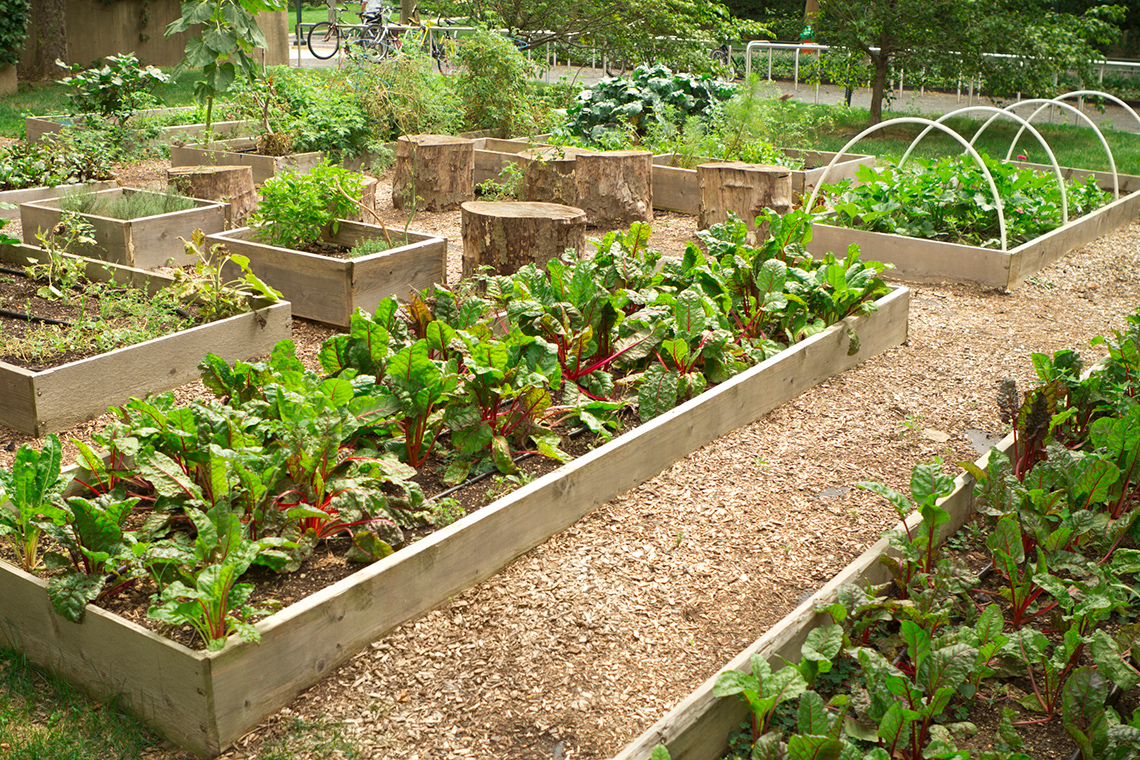Minds On
Making predictions about cm2
There are 100 cm in 1 m.

Use this to make a prediction about the number of cm2 in 1 m2.
Test your prediction and then follow the checklist to find out if your prediction was correct.
Was your prediction correct?

Now make a prediction about the number of cm3 in 1 m3.
Test your prediction:
- Find the volume of the cube in m3. (Volume = length x width x height)
- Find the volume of the cube in cm3.
Was your prediction correct?
Press ‘Answer’ to reveal if your prediction was correct.

Volume = 1 m3
Volume = 1,000,000 cm3
Action
Calculating perimeter, area, and volume
Activity one
A landscaper is creating a triangular garden in a backyard. One side of the garden is 3 m, the second side is 4 m, and the third side is 5 m. It is a right triangle.


The landscaper wants to create a stone border around the outside edge of the garden.
The stones are each 20 cm in length. How many stones will the landscaper require to go around the edge of the garden?
Press ‘Answer’ to reveal how many stones are need for the garden.
The perimeter of the garden is 3 + 4 + 5 = 12 m. The stones are each 20 cm = 0.2 m long. Therefore, the landscaper will need 12 ÷ 0.2 = 60 stones to go around the edge of the garden.
Activity two
You are going to paint one wall of your bedroom. You measure the length and height of your bedroom wall and find it is 4 m × 3 m. The wall has a window in the middle of it that measures 100 cm × 120 cm.
What is the total area to be painted? Record your thinking using a method of your choice.

Press ‘Answer’ to reveal the area to be painted.
The area of the window will need to be subtracted from the area to be painted.
Area of wall = 3 m × 4 m = 12 m2
Area of window = 100 cm × 120 cm = 12,000 cm2 = 1.2 m2
Area to be painted = 12 m2 − 1.2 m2 = 10.8 m2
Activity three
A movie theater manager is considering two containers to hold popcorn.
The dimensions of one of the containers was measured in mm and the other was measured in cm.
Which of the containers will hold more popcorn?
Popcorn containers with measurements. First container is short and wide with measurements in millimetres: 150 by 100 by 75. The second container is tall with measurements in centimetres: 10 by 5 by 21.
Press ‘Answer’ to access the volumes of the two containers.
Volume of the left container = 150 mm × 100 mm × 75 mm = 1,125,000 mm3
Volume of the right container = 10 cm × 5 cm × 21 cm = 1,050 cm3 = 1,050,000 mm3
Therefore, the container on the left will hold more popcorn.
Consolidation
Creating a planter box for the garden
Suppose you were going to create a rectangular planter box for your garden. You have two pieces of wood you can use as a border to go around the edge of your planter box. Each piece of wood is 3 m long. You can cut the wood to whatever dimensions you wish, so that your planter box is rectangular.
- First, choose the dimensions of your planter box. How long and wide will it be?
- Then, calculate the perimeter of your planter box.
- Next, calculate how much space the planter box will take up in the garden.
- Finally, the soil in your planter box should be 20 cm deep. What is the volume of soil that you will need?

Explore how the volume and surface area of the planter would change as its length, width, and height change.
Press 'Volume' and enter values for length, width, and height to calculate the volume of your planter box.
Reflection
As you read the following descriptions, select the one that best describes your current understanding of the learning in this activity. Press the corresponding button once you have made your choice.
I feel...
Now, expand on your ideas by recording your thoughts using a voice recorder, speech-to-text, or writing tool.
When you review your notes on this learning activity later, reflect on whether you would select a different description based on your further review of the material in this learning activity.
Press ‘Discover More’ to extend your skills.
Discover More- List three real-life examples when you might calculate perimeter, area, and volume.
- List two important reminders for working with the formulas for perimeter, area, or volume.
- List one way you overcame a challenge working with math calculations and formulas.
Connect with a TVO Mathify tutor
Think of TVO Mathify as your own personalized math coach, here to support your learning at home. Press ‘TVO Mathify’ to connect with an Ontario Certified Teacher math tutor of your choice. You will need a TVO Mathify login to access this resource.
TVO Mathify (Opens in a new window)